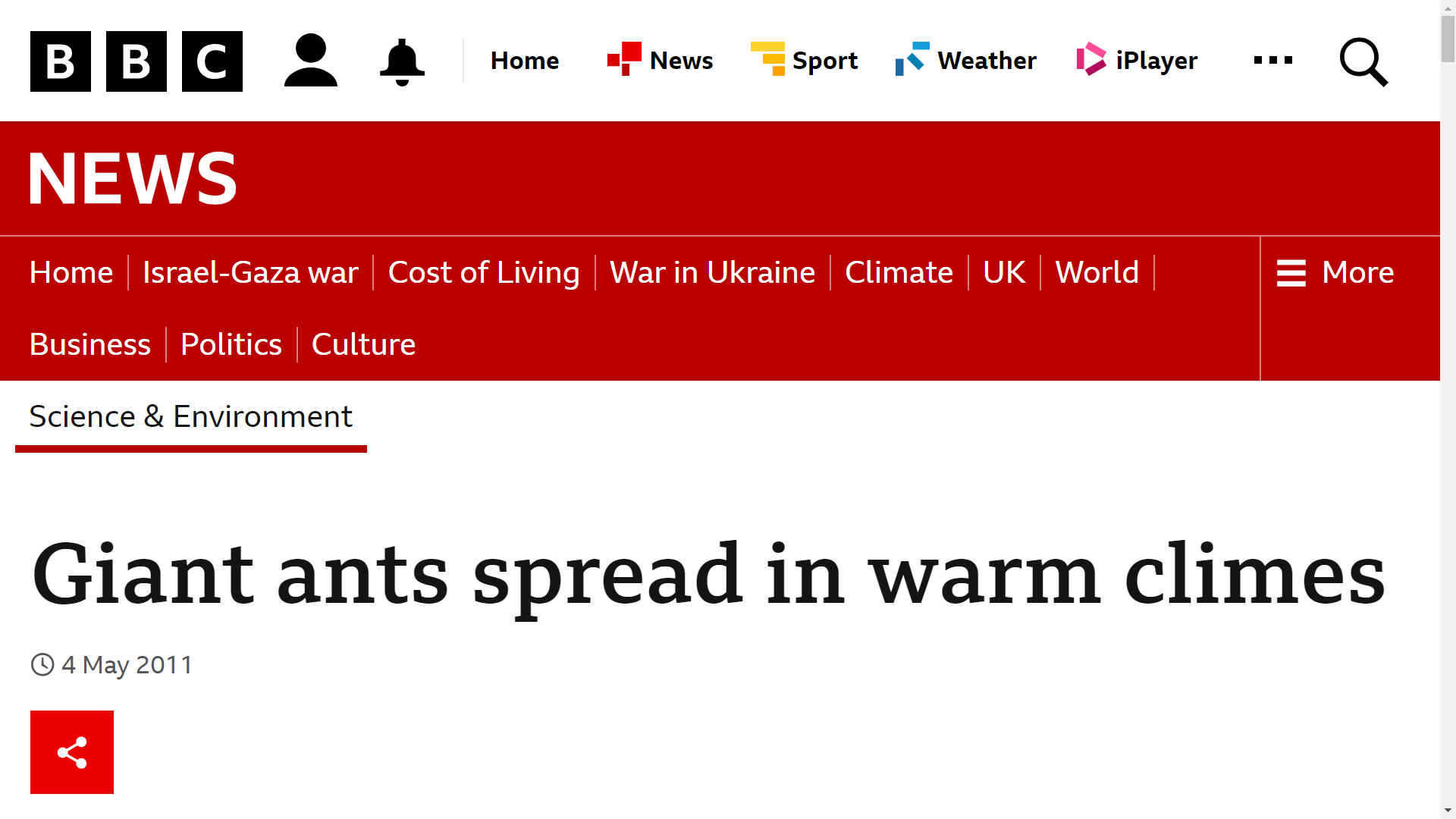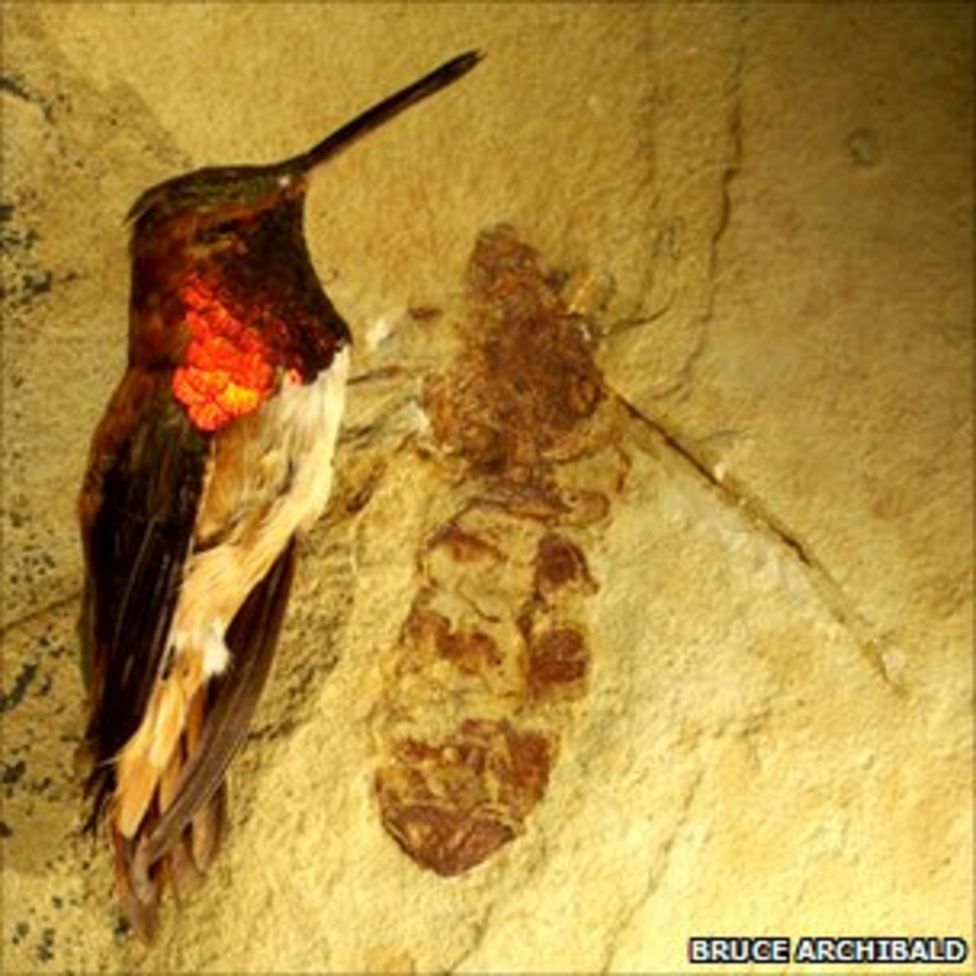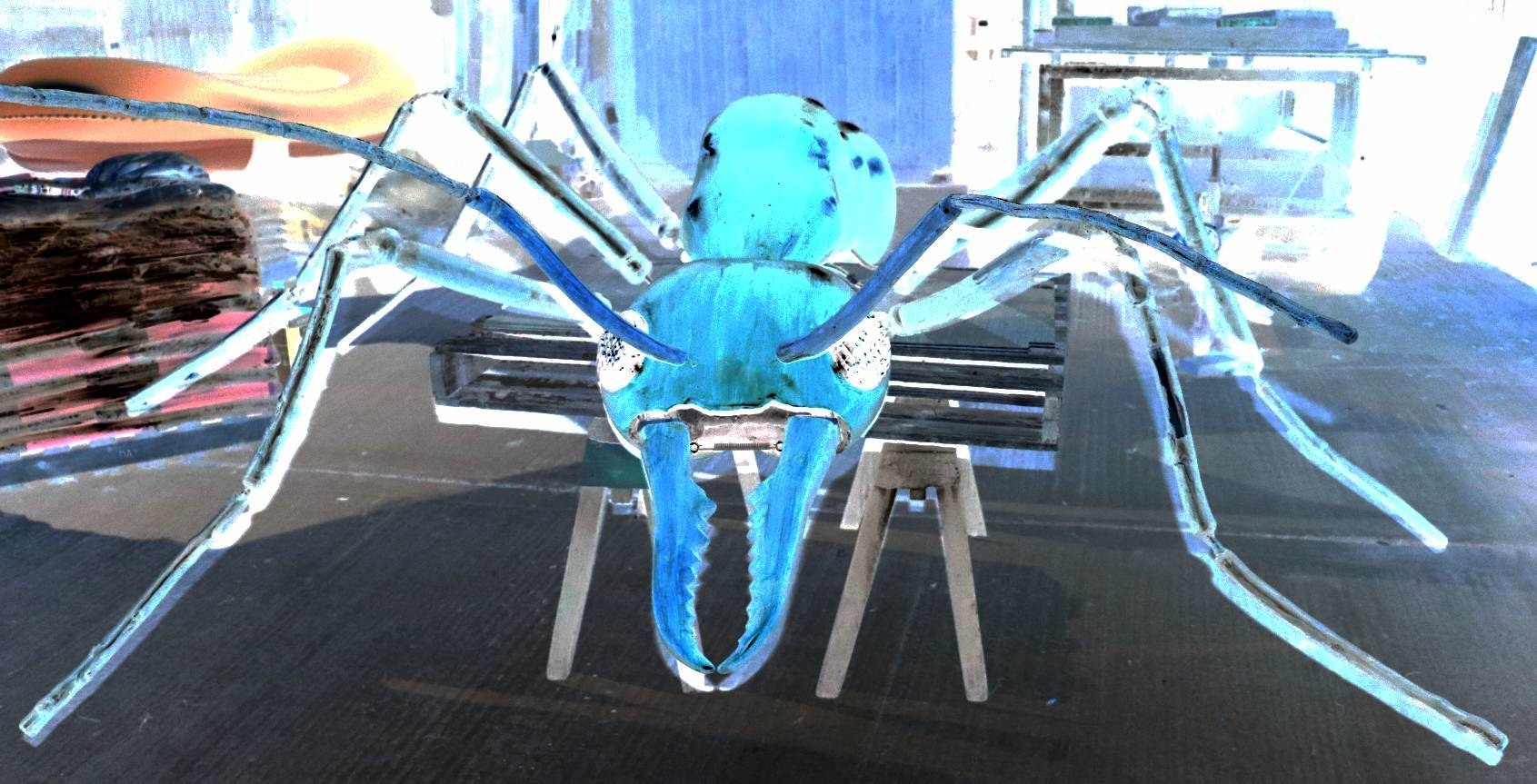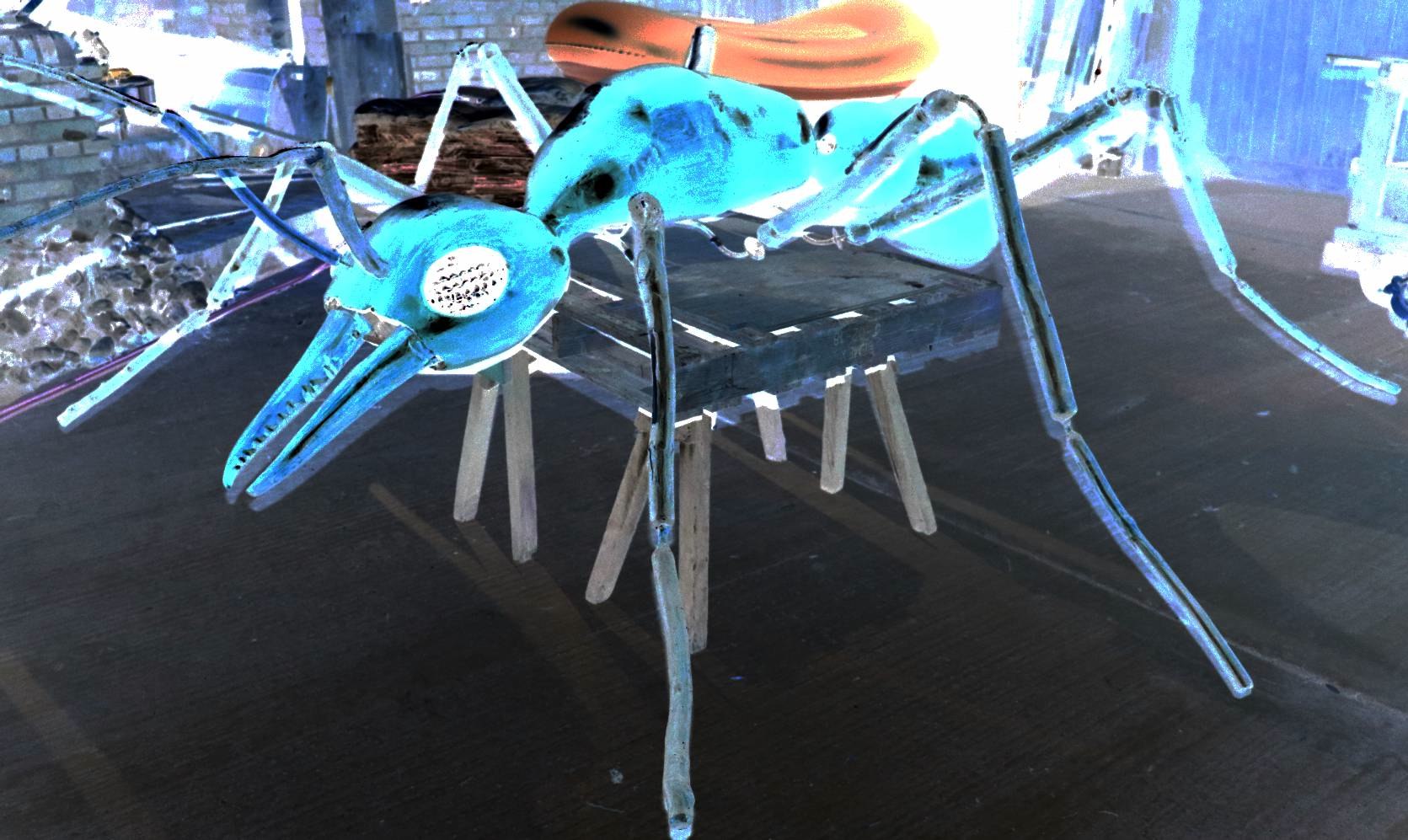
...
BBC NEWS 4 MAY 2011 - GIANT ANTS SPREAD IN WARM CLIMES
A giant ant growing over 5cm (2in) long crossed the Arctic during hot periods in the Earth's history, scientists say, using land bridges between continents.
The ant, named Titanomyrma lubei, lived about 50 million years ago and is one of the largest
ant species ever found.
Fossils were unearthed in ancient lake sediments in Wyoming, US.
Writing in the Royal Society journal Proceedings B, a Canadian-US team shows that giant ants, now and then, almost always live in hot climates.
The new species appears very similar to fossils found in Germany and in the Isle of Wight in southern England dating from the same period.
"We don't have any [fossils of] workers from this new species, we only have a queen," said Bruce Archibald from Simon Fraser University in British Columbia.
"It would have been very impressive - the one in Germany was estimated to have a body weighing as much as a wren, and this would have been of similar size," he told BBC News.
Little is known about how these ants lived or what they ate - but wings are present on the fossils.
They are found, in Europe and now in Wyoming, close to plants known to thrive only in temperatures around 20C (70F).


ROAD MUCH TRAVELLED
The Eocene, 56-34 million years ago, was punctuated by periods when the Earth's temperature rose higher than it is today, probably because of the release of greenhouse gases such as methane into the atmosphere.
And the researchers believe that the giant ants must have made a journey from Europe to North America - or vice versa - during one of these "hyperthermals".
"There was plenty of life transferring between Europe and North America at that time - mammals, trees - all sorts of things," said Dr Archibald.
"And plenty of insects are similar between British Columbia and Denmark - but they could have lived in a cooler climate and crossed at any time.
"This is the first example we have of something that would have needed warmth in order to make the crossing."
The land bridges across the Arctic would have seen a temperate climate for most of the Eocene, rising during the hyperthermals.
During the course of the research, the team mapped the locations of all ant species, extinct or contemporary, growing longer than 3cm (1.2in).
They found that virtually all are associated with tropical temperatures, although the reason why remains a mystery.
The biggest extant equivalents are the driver ants of the Dorylus genus, found in Central and East Africa, which can also grow to 5cm long.
By Richard Black

Several animals have an
anti-freeze protein in their blood. This includes arctic and antarctic fish, arthopods, octopuses, painted turtle hatchlings, wood frogs, arctic ground squirrels (the only mammal), some beetles, moths, bacteria, and the champions- tardigrades or water bears . They have handled lab temps from -278°C (-458°F) up to 150°C (300°F). Some tardigrades frozen in 1983 were thawed out 30 yrs later and not only survived, but could reproduce. It’s been estimated that they can withstand being dried out and will rehydrate and do okay after about 100 yrs. They have also gone into space and tolerated lack of oxygen and radiation.

The
artwork is also suitable for use in "Jimmy Watson's Magic Dinobot."
A proposed network TV serialization, about boy who saves his paper round
money to buy himself a robot for Christmas. Then, when assembled, it
come to life, to become his friend.


Is there any basis of truth
in the "Sectasaur" Antarctic John Storm adventure?
The “Sectasaur” Antarctic John Storm adventure is a work of fiction,
but it is based on some scientific facts and speculations. For example,
the story involves the discovery of a giant prehistoric insect,
resembling a giant ant, that was frozen in the Antarctic ice for
millions of years. This is inspired by the real fossil genus Titanomyrma,
which was a group of giant ants that lived during the Eocene epoch,
about 50 million years ago. Some of these ants were as big as
hummingbirds, and had wingspans of up to 15 cm. They are known from
fossils found in Germany, England, Wyoming, and British Columbia123. The
story also explores the possibility of cross-Arctic dispersal of
thermophilic insects, which means that these ants could have migrated
from Europe to North America via a land bridge that existed across the
Arctic when the climate was warmer. This is a hypothesis that has been
proposed by some paleontologists to explain the distribution of
Titanomyrma and other ancient organisms12. However, there is no evidence
that Titanomyrma or any other giant insect ever existed in Antarctica,
or that they could survive the freezing temperatures there. The story
also involves the use of DNA technology to recreate and enhance extinct
species, which is a controversial and hypothetical topic that has
ethical and ecological implications. The story is meant to be an
entertaining and imaginative adventure, not a realistic or accurate
depiction of paleontology or biology.
1. https://en.wikipedia.org/wiki/Titanomyrma
2. https://interestingengineering.com/science/giant-ant-fossil-life-50-million
3.
https://www.livescience.com/14008-giant-ant-fossil.html


ARTWORK
- Somewhat better than the huge ants in "Them," but perhaps not as good as
the CGI in Antman. Now a museum
exhibit in Sussex, the artwork is based on an Australian Bulldog
ant.
https://www.bbc.co.uk/news/science-environment-13269302
https://www.bbc.co.uk/news/science-environment-13269302
https://en.wikipedia.org/wiki/Titanomyrma
https://interestingengineering.com/science/giant-ant-fossil-life-50-million
https://www.livescience.com/14008-giant-ant-fossil.html

RETURN
TO BASECAMP
OR EXPLORE OUR
PREHISTORIC A-Z









